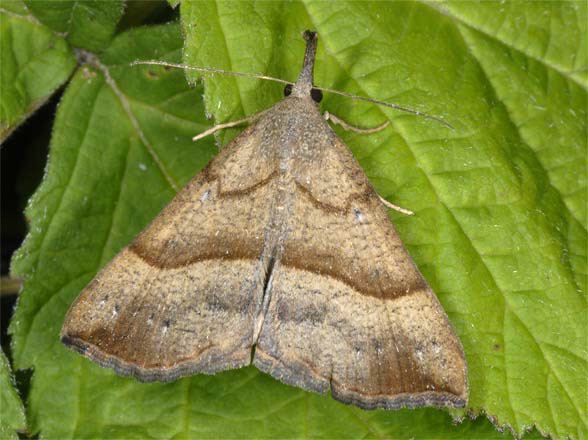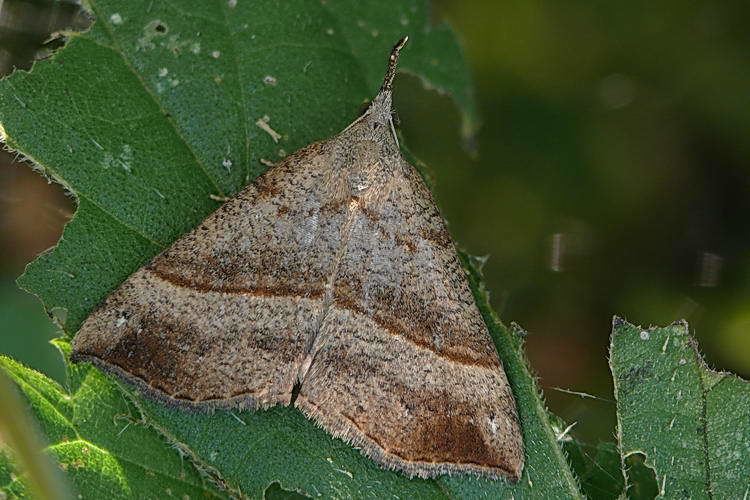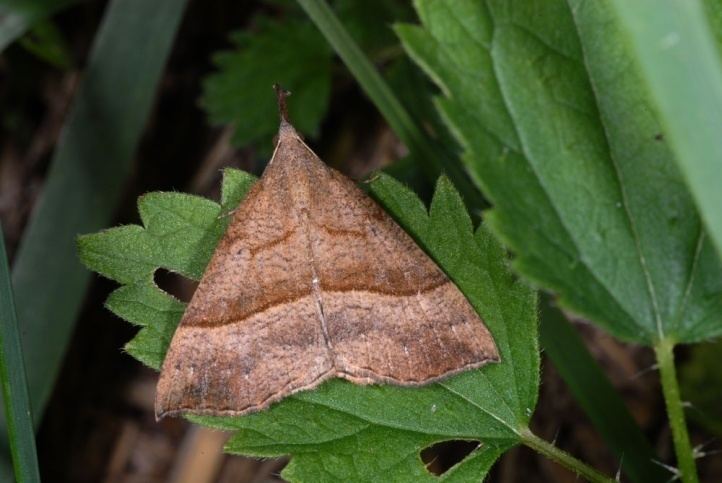Family Noctuidae | Genus Hypena Rank Species | |
 | ||
Similar Hypena, Rivula sericealis, Herminia grisealis, Diachrysia chrysitis, Laspeyria flexula | ||
Hypena proboscidalis
Hypena proboscidalis, the snout, is a moth of the Noctuidae family. It is found in Europe in the north to the Arctic Circle. East it ranges across the Palearctic including North Africa east to Japan. In the Alps, it rises to heights of over 1600 metres. Also in India.
Contents

Technical description and variation

The wingspan is 25–38 mm. Forewing grey brown with numerous dark transverse striae, and with a brownish yellow suffusion in the females; the lines dark brown; the inner curved or bent in middle; the outer oblique, nearly straight, slightly incurved at costa, internallyshaded with dark brown; the subterminal cloudy and partially interrupted, above middle marked with black white-tipped dashes, followed by a brown cloud, the subapical edge of which is oblique; hindwing pale greyish. As a rule most females are brownish, — ab. brunnea Tutt, —- most males grey without the brown; - the form deleta Stgr., from the Altai Mts., Amurland, and Kamschatka, is paler, the forewing yellowish, sprinkled with brown, with less distinct markings; - tatorhina Btlr.[full species [[Hypena tatorhina]] Butler, 1879 from Japan, is small, grey in both sexes, with dingy fuscous suffusion, and a black spot in cell; the hindwing fuscous; - from W. China (Omei-shan and Tatsienlu) comes a form. — subsp. flexilinea subsp. nov.[Warren] dark grey brown in the female, with the transverse striae and the shades preceding the lines dark smoky fuscous, the outer line visibly bent above middle;in the males the dark shading is slight: --a similar but smaller form - indicalis Guen., occurs in the Goorais Valley. Kashmir, where the outer line has a tendency to be elbowed on both folds, and the male, which is quite without dark shading, has a small black dot in cell and a large black spot at its end.
Biology
The moth flies in two generations from May to September[1].

Larva velvety green; dorsal line darker green, the subdorsal lines paler; head, legs, and tubercles green.The larvae feed on hop, nettle and ground-elder.
Habitats include deciduous, mixed and coniferous forests, rivers, hedges and gardens and parkland.

